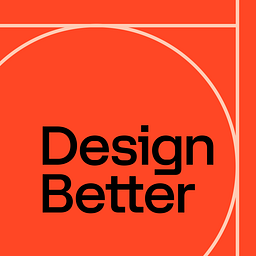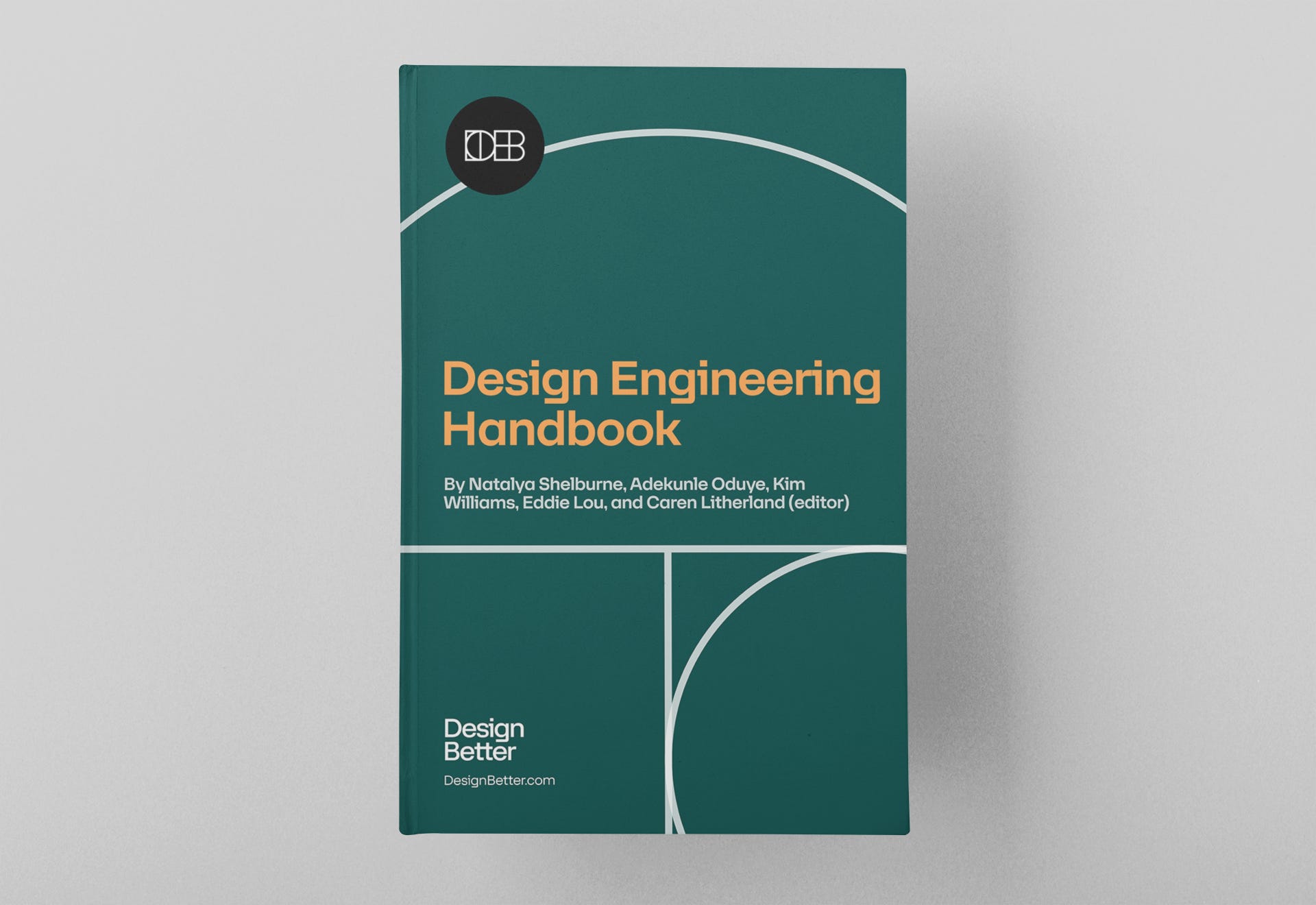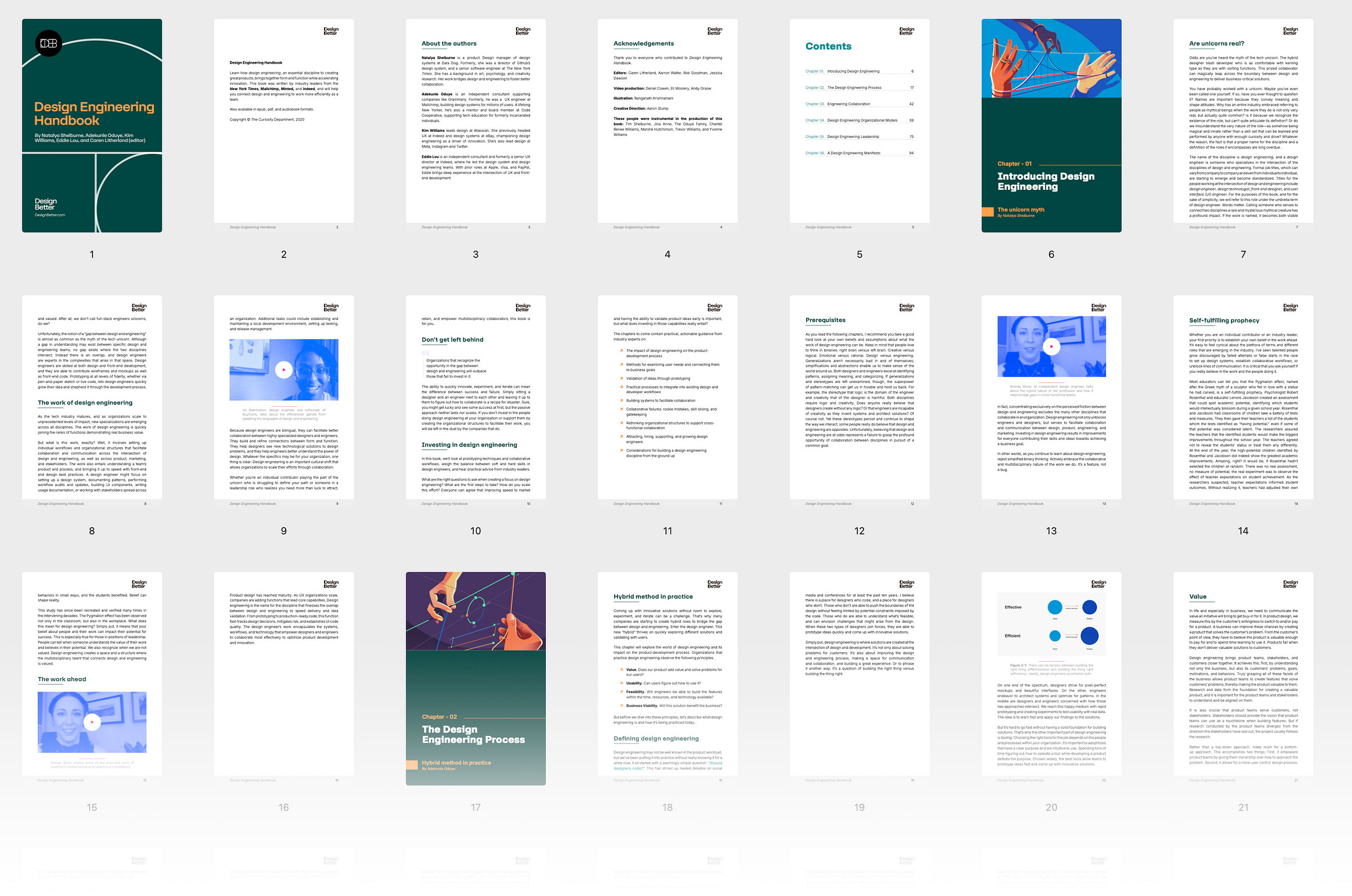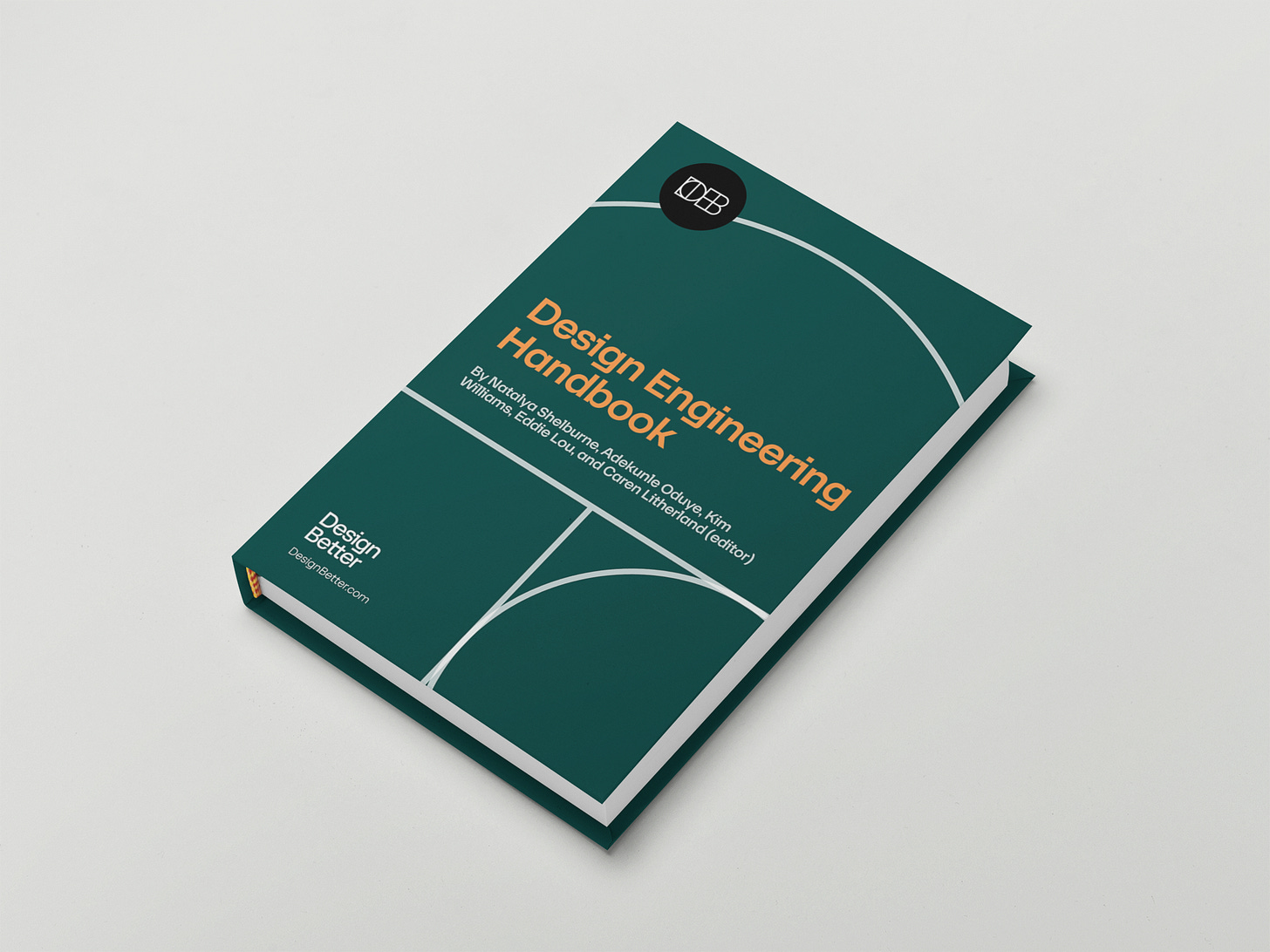Design Engineering Handbook
Description
Design Engineering Handbook is a practical guide to bridging the gap between design and engineering—transforming collaboration into a competitive advantage. Written by leaders from The New York Times, Mailchimp, Minted, and Indeed, it offers a clear framework for integrating design and development to move faster, validate ideas earlier, and create better products.
Through real-world examples, you’ll learn how design engineers operate at the intersection of form and function—building prototypes, establishing design systems, and translating between disciplines.
You’ll learn proven processes for:
Building collaborative workflows between designers and developers
Using prototyping to validate ideas and uncover edge cases early
Structuring design engineering teams for maximum impact
Avoiding common pitfalls like skill siloing and gatekeeping
Leading and scaling the discipline within different organizational models
Whether you’re an individual contributor looking to define your career path or a leader aiming to integrate design engineering into your company’s DNA, this handbook provides the tools and insights to unlock faster innovation, stronger teamwork, and better products.
Length: 102 pages
Available in PDF and epub formats, free for Design Better Premium subscribers
Already a Premium subscriber? Download our entire library here.
Get the Design Engineering Handbook
Get this book in PDF and epub formats today by becoming a Premium subscriber. When you subscribe, you’ll also get the entire Design Better library, 2 extra podcast episodes each month (all ad-free), access to monthly AMAs with designers and leaders at Google, IBM, Nike, Pinterest, and so much more. You’re getting more than just a book, you’re getting an education.
What’s in Design Engineering Handbook

Introducing Design Engineering
Defines the discipline of design engineering, dispelling the “unicorn” myth, and shows how specialists at the intersection of design and engineering create value, improve collaboration, and accelerate innovation through prototyping, systems, and workflows.

The Design Engineering Process
Outlines the core principles of value, usability, feasibility, and business viability, and demonstrates how design engineers apply rapid prototyping, iterative testing, and collaborative workflows to ensure products are both desirable and buildable.








